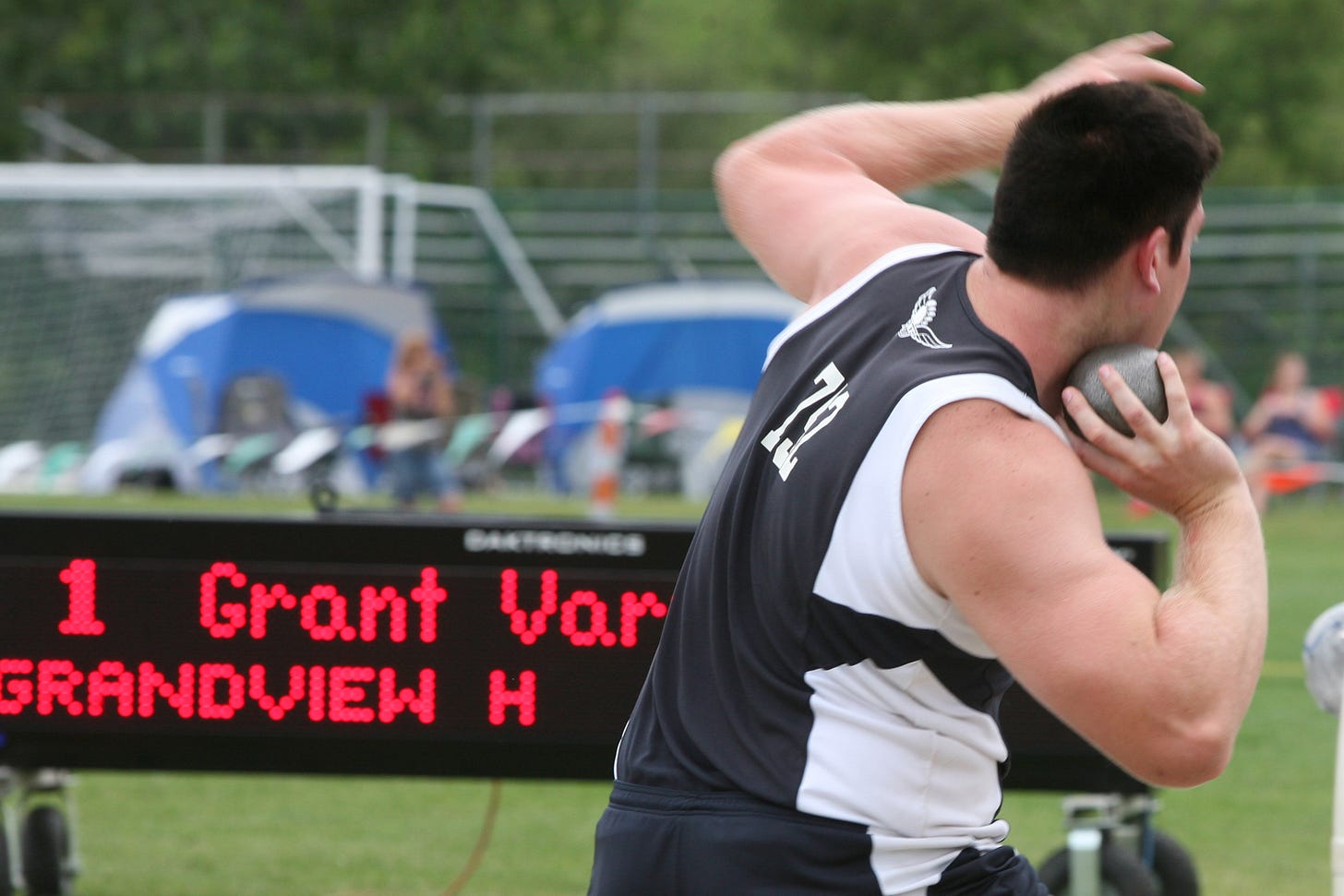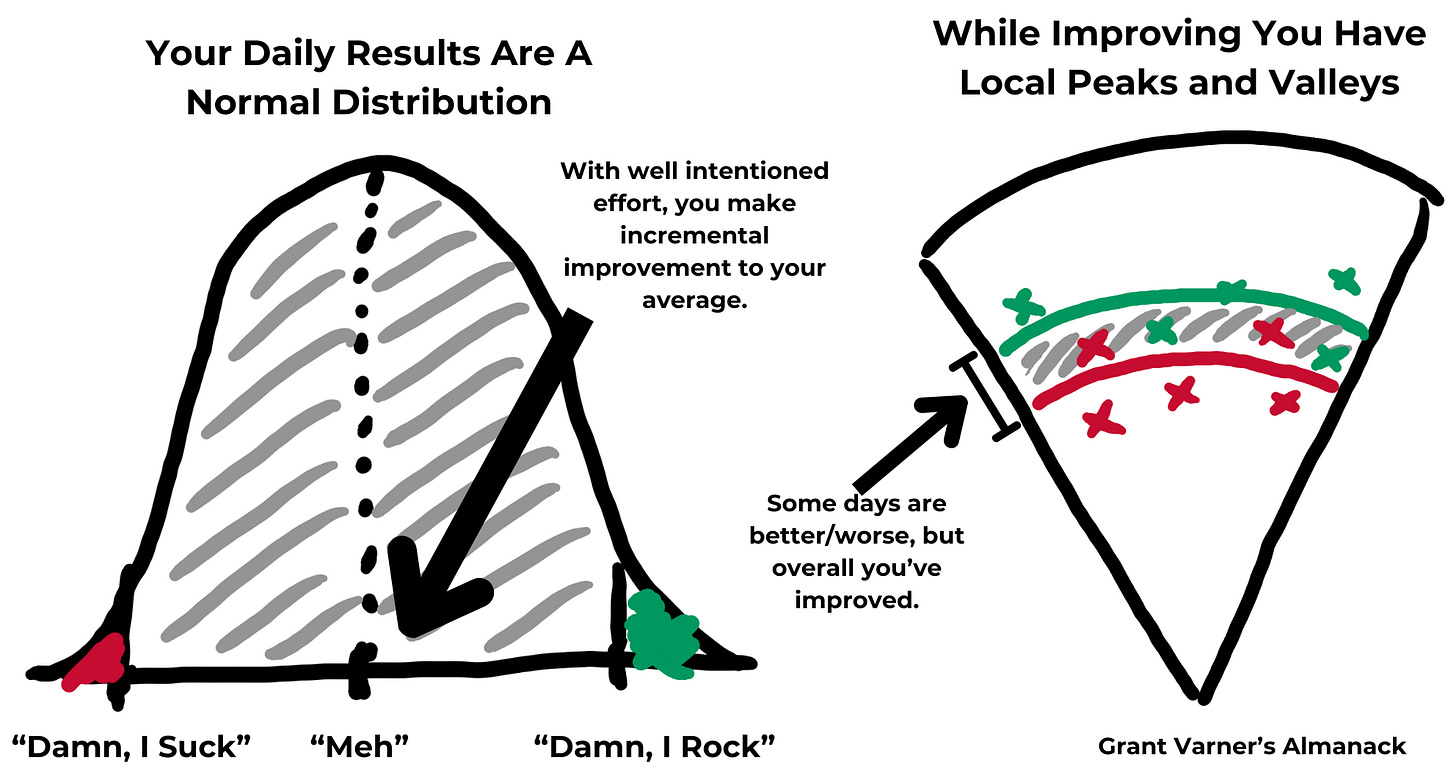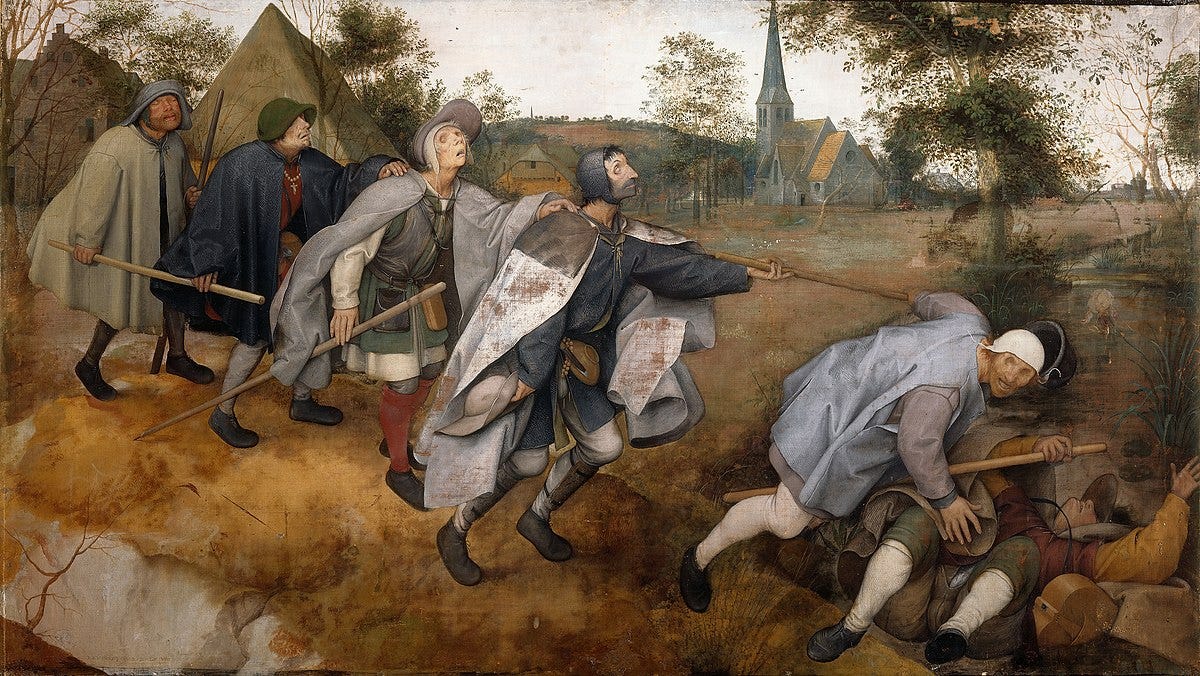The Humble Confidence of 10,000 Hours of Practice
I looked out into the triangular sector of clay. 500 people sat on the grassy hill at Jesse Owens Memorial Stadium—all eyes were on me. All that mattered in that moment was the chalk I carefully painted onto my callused hands before grabbing my shot put and walking into the concrete ring.
My coach, a long time competitor in the USA Track & Field Masters division, watched from the bleachers. For dramatic effect, I’ll refer to him as "The Master”. Also because it gives Mr. Miyagi vibes from Karate Kid.
Finally, I set the chalk down and picked up my shot put. With the humble confidence of 10,000 hours of practice, I walked into ring, started my pre-throw routine, and let it fly.
Despite its simplicity, the technique required to be great at shot put takes years of slow iteration, without any guarantee of success.
How do you stay committed to something difficult when progress is slow and results are uncertain?
The Journey Is The Goal
Early on, I treated shot put like a means to an end. I threw the shot put far to hit a certain distance. Break a record. Get on a podium. Beat a rival.
At best, you achieve your goal and feel just as empty inside. At worst, you run out of steam before even reaching the mark you set out to achieve.
In this way, I’ve found that shot put is very much like the creative act of writing. In her book Bird by Bird, Anne Lamott remarks:
“I still encourage anyone who feels at all compelled to write to do so. I just try to warn people who hope to get published that publication is not all it is cracked up to be.
But writing is. Writing has so much to give, so much to teach, so many surprises. That thing you had to force yourself to do—the actual act of writing—turns out to be the best part.
The act of writing turns out to be its own reward.”
Shot put—like writing, sales, and anything you can get better at—is best when the act is its own reward.
When each throw, sentence you write, or connection you make with a customer is its own reward, you enter a perpetual state of joy—a striving that brings fulfillment for the long term, unfazed by the ups and downs of the hedonic treadmill.
Improve, Don’t Innovate
When a bird makes a nest it doesn’t focus on innovating a new design. Instead, it builds the nest the same way it always has—a slow process of gathering straw, grass, or string one at a time.
Each passing day the nest looks no different than it did before. But when it comes time to lay an egg many months later, the nest is complete made up of many small parts.
Had the bird tried to innovate—perhaps by building a differently shaped nest—the nest wouldn’t be ready for the Spring.
“I fear not the man who has practiced 10,000 kicks once. I fear the man who has practiced one kick 10,000 times.” — Bruce Lee
Sometimes innovation is necessary. But often incremental improvement is what‘s needed.
The key to mastery—and the spirit of kaizen—is incremental improvement. Not overhaul. Making small progress in one area at a time.
Don’t Ride The Emotional Roller Coaster
When you make continual improvement, your results generally follow a normal distribution. The bulk of your results will be average. But once in a while you’ll over-perform, or under-perform.
Take over-performance as a sign of progress and under-performance as a sign of how much more you can improve. The key is to disconnect from the emotional roller coaster of your daily results.
“If you work at that which is before you, following right reason seriously, vigorously, calmly, without allowing anything else to distract you, but keeping your divine part pure, as if you should be bound to give it back immediately; if you hold to this, expecting nothing, fearing nothing, but satisfied with your present activity according to Nature, and with heroic truth in every word and sound which you utter, you will live happy.” — Marcus Aurelius, Meditations
Humility Gives Way To Expertise
The irony of expertise is that it feels like consistently winning is the path to mastery. In reality, the honest admission of being a beginner is the path to improvement.
Even though you’re getting better, you might feel like you’re getting worse because you’re admitting your weakness.
Zen In The Art of Archery, describes what happens when you admit defeat:
“He is now forced to admit that he is at the mercy of everyone who is stronger, more nimble and more practiced than he.”
The swordmaster has no other path forward other than continually refining his craft. In doing so:
“The beginner stakes everything on surpassing the others and even himself. He acquires a brilliant technique, which gives him back some of his lost self-confidence, and thinks he is drawing nearer and nearer to the desired goal.”
Having the humility to accept your shortcomings is the path to improvement. It forces you to reckon with your lack of mastery, driving you to surpass others, including yourself.
The Parable Of The Blind Guides
Matthew 15:14 is a brief parable warning against following “blind guides” Following someone who is not qualified to guide can lead to negative outcomes, exemplified by the verse "if the blind lead the blind, both will fall into a ditch.”
Following someone unqualified to guide can lead to negative outcomes. There isn’t a certification, badge, or credential for being a great teacher. A great teacher has deep mental model of the subject matter they’re coaching.
In the same way you should optimize your environment for growth, you should do the same with a teacher, mentor, or coach.
Coming Full Circle
Ultimately that throw from beginning of the story wouldn’t win me a gold medal—I had the second farthest throw in Ohio that year.
But I still celebrated with pizza & chocolate milk afterwards. Because I earned something more valuable than a gold medal: an understanding of the philosophy of kaizen.
—Grant Varner
P.S. If you’ve been reading me for a while, you may notice I typically write heavily researched articles. This essay was more of a steam of conscious/memoir format. A lot longer, but more depth & personal stories. Figured I’d just let this one rip, just to see how it’d turn out. What do y’all think??






